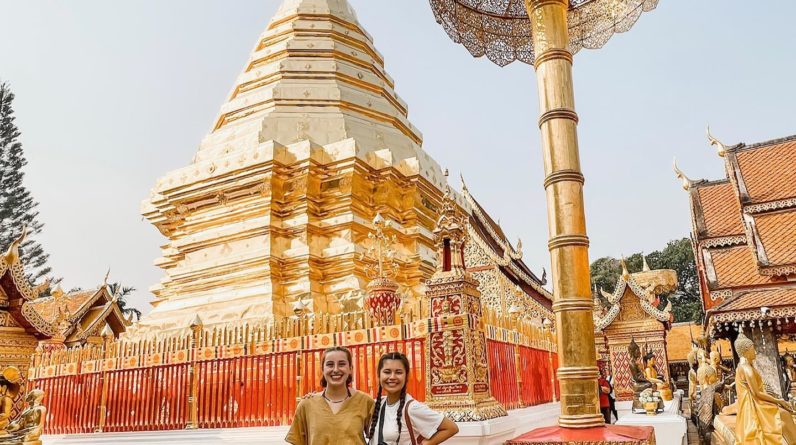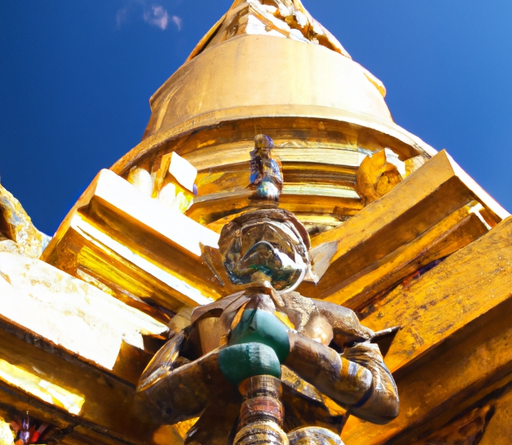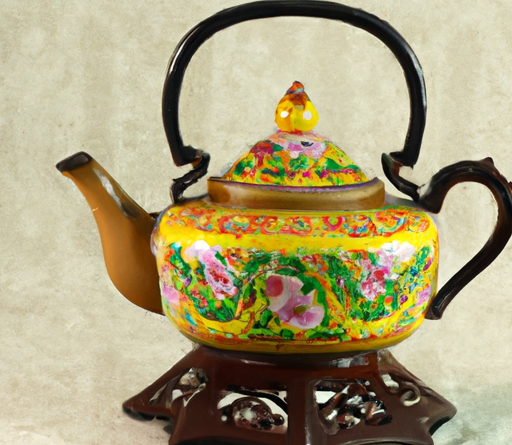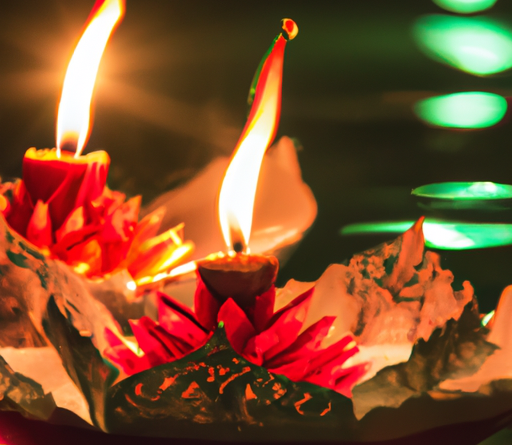
Hey there! Have you ever wondered if there are any specific dress codes you need to follow when visiting temples or sacred sites? Well, you’re not alone! Many people have asked this question before, and it’s definitely something worth considering if you’re planning to visit these places. In some cultures and religions, there are certain clothing guidelines that need to be followed out of respect for the sacredness of the site. So, if you’re planning a trip to a temple or a sacred site, it’s important to be aware of these dress codes to ensure a smooth and respectful visit.
In our article, we will delve deeper into the topic of dress codes when visiting temples or sacred sites. We’ll explore the cultural and religious significance behind these dress codes, and provide you with practical tips on what to wear and what to avoid. We’ll also discuss the importance of respecting local customs and traditions, and how adhering to dress codes can help foster a meaningful and respectful experience. So, if you’re curious to learn more about dress codes for temples and sacred sites, stay tuned for our in-depth exploration of this topic! When visiting temples or sacred sites, it is essential to respect and adhere to certain dress codes. These dress codes vary across different religions and cultures, but they all serve the purpose of preserving the sacred atmosphere, promoting cultural understanding, and respecting religious beliefs. By dressing appropriately, you not only show respect to the local customs and traditions but also enhance your own cultural experiences and build cross-cultural connections.
Respecting Religious Beliefs
One of the primary reasons for following dress codes at temples and sacred sites is to respect the religious beliefs of the worshippers. These sites hold significant spiritual and religious value, and it is important to show reverence by dressing in a manner that is considerate of those beliefs. By adhering to the dress codes, you demonstrate your respect for the worshippers and their practices.
Preserving Sacred Atmosphere
Dress codes also play a crucial role in preserving the sacred atmosphere of these sites. Temples and sacred sites are meant to be places of peace, reflection, and spiritual connection. Revealing or tight clothing can be seen as inappropriate and may disrupt the tranquility of the space. Following the dress codes helps to maintain the sanctity of the environment and allows everyone to fully immerse themselves in the spiritual experience.
Promoting Cultural Understanding
Following dress codes when visiting temples and sacred sites also promotes cultural understanding. Different religions and cultures have their own unique customs and traditions, including specific dress codes. By respecting and adhering to these dress codes, you demonstrate your willingness to learn and understand the local culture. It shows that you value and appreciate diversity, and fosters a sense of mutual respect between different cultures.
Common Dress Code Requirements
While dress codes vary across different temples and sacred sites, there are some common dress code requirements that are frequently observed. These requirements usually include covering the shoulders and knees, avoiding revealing or tight clothing, removing shoes, and covering the head. It is important to familiarize yourself with these requirements before visiting a specific site to ensure that you are dressed appropriately.
Covering Shoulders and Knees
One of the most common dress code requirements is to cover the shoulders and knees. This is particularly important for both men and women when visiting temples. It is considered respectful to have your shoulders covered, either by wearing sleeved tops or by carrying a shawl or scarf to drape over your shoulders if needed. Similarly, wearing clothing that covers the knees, such as long skirts or pants, is also expected.
Avoiding Revealing or Tight Clothing
To maintain the sanctity of the space, it is generally advised to avoid wearing revealing or tight clothing when visiting temples or sacred sites. This includes clothing such as shorts, tank tops, or low-cut tops, which may be seen as disrespectful or inappropriate. Opt for loose-fitting and modest outfits that cover your body appropriately.
Removing Shoes
Another common dress code requirement is to remove your shoes before entering sacred areas within temples. This practice is considered a sign of respect, as it symbolizes leaving behind the dirt and chaos of the outside world. Make sure to check if there are designated areas to leave your shoes and socks before proceeding further into the temple.
Covering Head
In some temples or sacred sites, it may be required to cover your head as a sign of respect. This is commonly observed in many Hindu temples and some Buddhist temples as well. If this is the case, it is recommended to carry a scarf or shawl that you can use to cover your head when necessary.
Interpreting Dress Codes Across Different Religions
It is important to note that dress codes can differ among different religions and religious sites. It is crucial to have an understanding of these differences to dress appropriately when visiting each specific site.
Hindu Temples
In Hindu temples, modesty is highly valued. It is customary to cover your shoulders, chest, and legs, particularly when visiting the inner sanctum where the main deity is worshipped. Many Hindu temples also require the removal of footwear before entering certain areas. Additionally, wearing clean and traditional attire is appreciated.
Buddhist Temples
When visiting Buddhist temples, it is generally expected to dress modestly and conservatively. Covering the shoulders and knees is important, and it is common to remove footwear before entering the temple. Wearing white or light-colored clothing is also considered respectful and symbolizes purity.
Islamic Mosques
Islamic mosques usually have strict dress codes for both men and women. Women are often required to cover their heads with a hijab or similar head covering. Loose-fitting and modest clothing is expected, with arms, legs, and chests covered. Men are also expected to dress modestly, with long pants and shirts.
Christian Churches
Most Christian churches do not have specific dress codes, but it is still customary to dress modestly and respectfully. Revealing or inappropriate clothing is generally discouraged, and it is best to err on the side of caution by wearing modest attire.
Understanding Cultural Sensitivities
Beyond religious considerations, it is crucial to be aware of and respect the cultural sensitivities of the local community. Before visiting a temple or sacred site, it is advisable to research and familiarize yourself with the customs and practices of that particular religion or culture. This will help you understand the expectations regarding dress codes and other customs to ensure you are respectful during your visit.
Observing Local Practices
While researching is important, observing the local practices while on-site is equally important. Pay attention to how local worshippers dress and behave, and try to imitate their practices. This will help you blend in and show your respect for their traditions. If you are unsure about any specific customs, do not hesitate to ask for guidance or clarification from a knowledgeable local or temple staff.
Showing Respectful Attitude
Above all, it is crucial to show a respectful attitude towards the local customs and traditions. Even if you unintentionally make a mistake, apologizing and demonstrating a genuine willingness to learn and respect the local practices will be greatly appreciated. Being open-minded and embracing the cultural differences will make your experience at the temple or sacred site more rewarding.
Consequences of Not Following Dress Codes
Not adhering to dress codes when visiting temples or sacred sites can have various consequences. These consequences may include being denied entry to the site, causing offense to local worshippers, and creating discomfort for others.
Denied Entry to Sacred Sites
Some temples and sacred sites have strict dress code policies and may deny entry to those who are not dressed appropriately. This can lead to disappointment and the missed opportunity to experience the spiritual and cultural aspects of the site. To avoid this, it is essential to research and adhere to the dress code requirements beforehand.
Offending Local Worshipers
Not following dress codes can also offend local worshippers. They may view it as a sign of disrespect or disregard for their religious beliefs. It is important to remember that you are a guest in these sacred spaces and should strive to be respectful of the local customs and practices.
Creating Discomfort for Others
Dressing inappropriately can also create discomfort for other visitors to the site. Revealing or tight clothing may make others feel uneasy or distracted from their own spiritual experience. By dressing appropriately, you contribute to creating a comfortable and harmonious environment for everyone.
Tips for Dressing Appropriately
To ensure that you are dressing appropriately when visiting temples or sacred sites, here are some tips to consider:
- Wear loose and breathable clothing that covers your shoulders and knees.
- Carry scarves or shawls to cover your head or drape over your shoulders if required.
- Choose comfortable footwear that can easily be removed if needed.
- Avoid wearing clothing with offensive symbols or designs that may be inappropriate for the sacred environment.
Dress Code Exceptions
While most temples and sacred sites have specific dress code requirements, there are exceptions during specific pilgrimage attire or special festivals and celebrations. During these times, the dress codes may be more relaxed, allowing for cultural attire and vibrant colors. However, it is still important to dress modestly and respectfully, even during these exceptions.
Dress Codes and Gender
It is worth noting that dress codes for men and women may differ in some religious and cultural contexts. Understanding these differences and respecting the modesty standards of each gender is important. Always be mindful of any specific requirements or restrictions that may apply based on gender.
Respecting Local Customs and Traditions
In addition to dress codes, it is crucial to respect the local customs and traditions when visiting temples or sacred sites. This includes being mindful of offensive symbols or designs on clothing, adapting to local norms, and behaving respectfully within the sacred space. By doing so, you demonstrate your appreciation for the local culture and traditions.
Conclusion
The importance of following specific dress codes when visiting temples or sacred sites cannot be overstated. By dressing appropriately, you show respect for religious beliefs, preserve the sacred atmosphere, and promote cultural understanding. Understanding and adhering to dress codes help enhance your own cultural experiences and build cross-cultural connections. It is essential to remember that when visiting these sacred spaces, you are not only a visitor but also a participant in the spirituality and traditions of the site. By dressing respectfully, you contribute to creating a harmonious and enriching experience for yourself and those around you.






